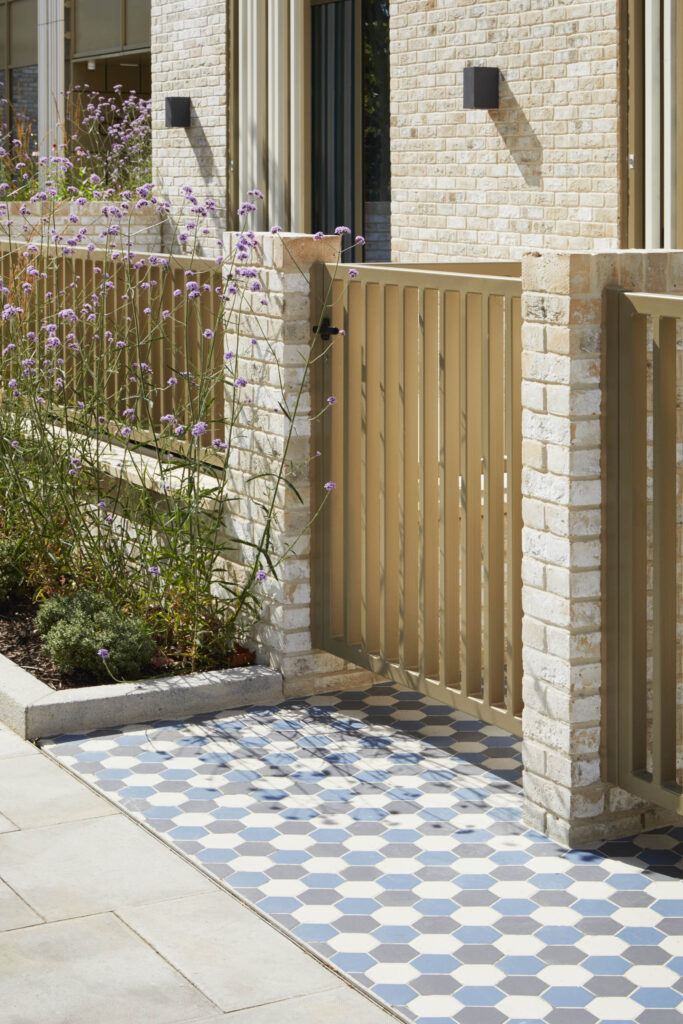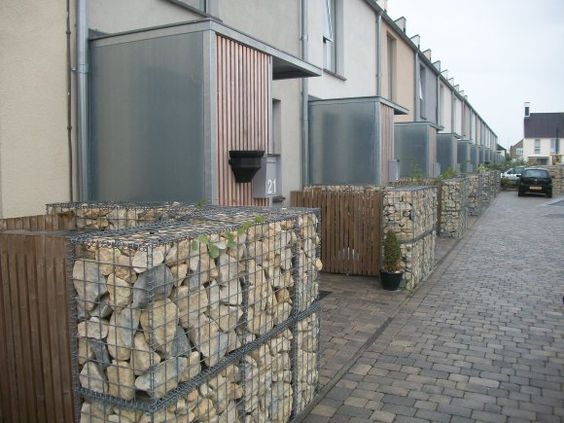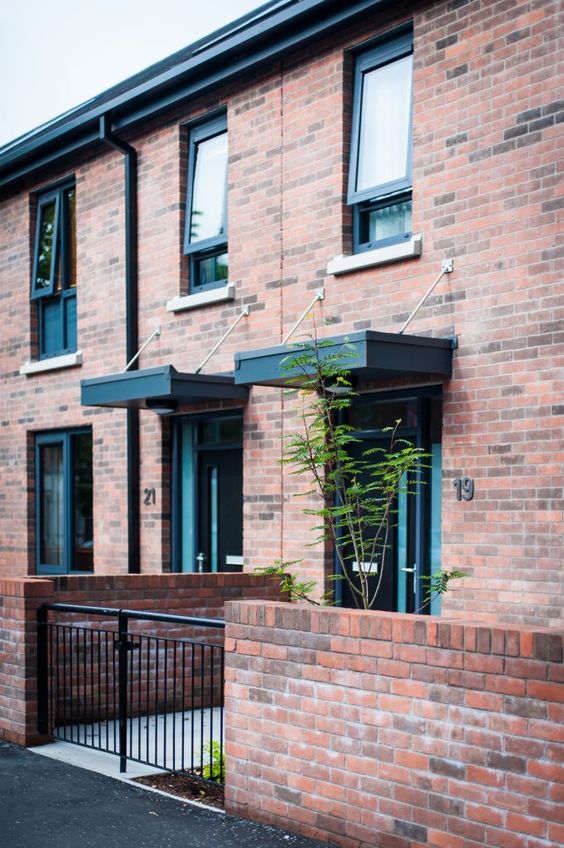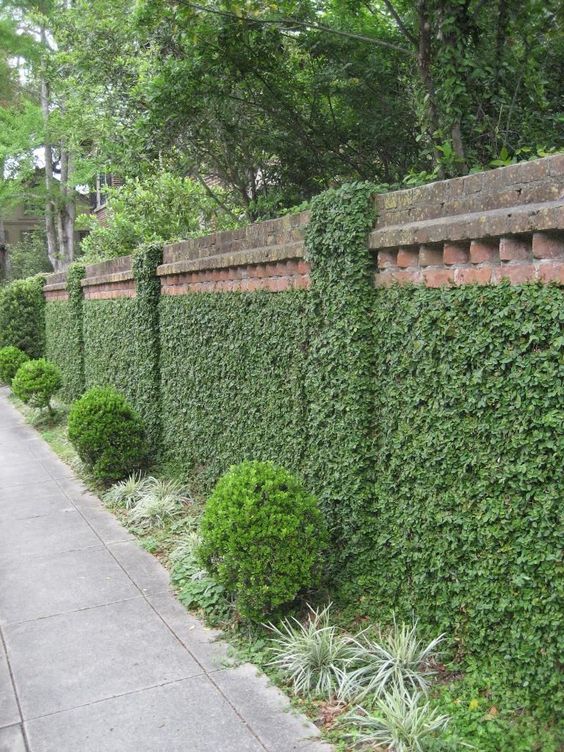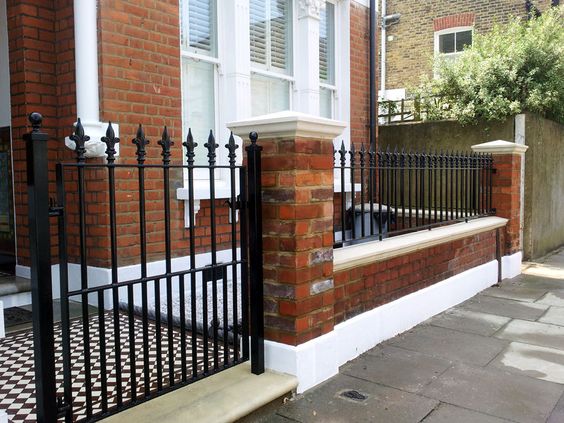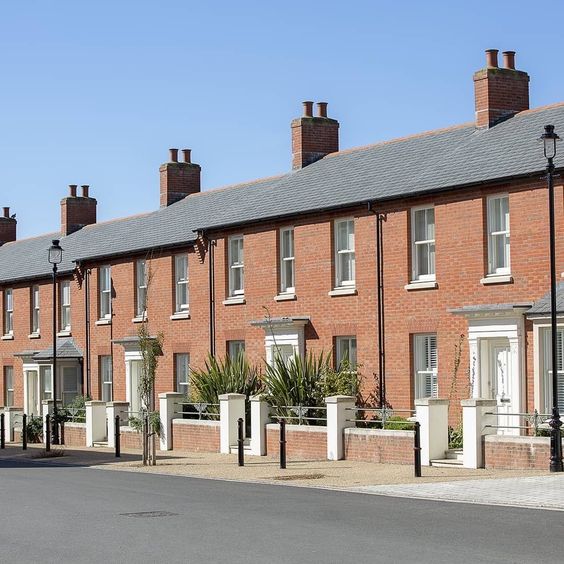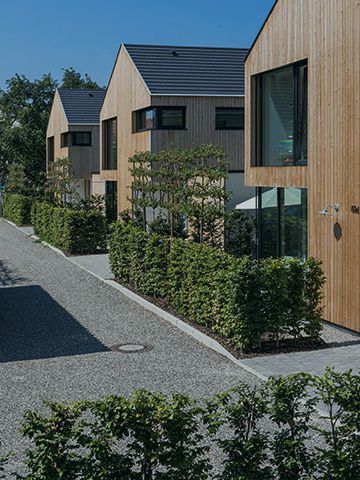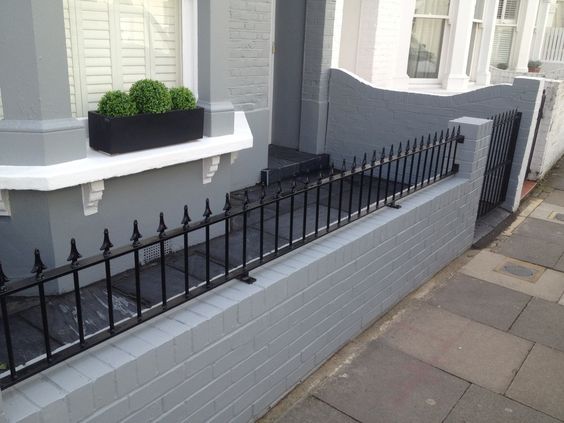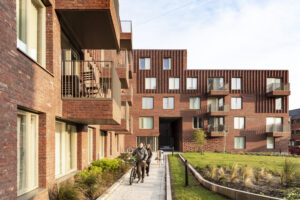
Hulme Living Leaf Street Housing
Hulme Living Leaf Street Housing by Mecanoo for One Manchester The area around Leaf Street in Hulme, just outside Manchester city centre, has a history
The presence and proximity to landscape is important for health and well-being. The creation of high-quality landscape is vital for development, playing an intrinsic role in establishing a sense of placeA sense of place is the unique collection of qualities and characteristics that makes one town or development different to another. It lends meaning or attachment to a development or place, transforming it into a home, a neighbourhood, or a community. A sense of place is also what makes our physical surroundings worth caring about. More through the creation of enhanced natural and urban environments. Development should not be quantum led but informed by landscape-led placemakingRecognising the distinctiveness of individual locations in plans, policies and proposals, and responding accordingly. More principles.
Well-designed places are influenced positively by the surrounding landscape characterCharacter includes all of the elements that go to make a place, how it looks and feels, its geography and landscape, its noises and smells, activity, people and businesses. This character should be understood as a starting point for all development. Character can be understood at three levels; the area type in which the site sits, its surroundings and the features of the site. More, urban grainThe pattern of the arrangement of street blocks, plots and their buildings in a settlement. The degree to which an area’s pattern of blocks and plot subdivisions is respectively small and frequent (fine grain), or large and infrequent (coarse grain). Urban grain is a key component of defining the character of a place. More, patterns of built formForm is the three-dimensional shape and modelling of buildings and the spaces they define. Buildings and spaces can take many forms, depending upon their: size and shape in plan; height; bulk – their volume; massing – how bulk is shaped into a form; building lines – the alignment of building frontages along a street; and relationship to the plot boundary – and whether they share party walls or not. In the case of spaces, their form is influenced by the buildings around them. More, well defined spaces and the local vernacular. Developments do not need to copy their surroundings in every way and should have their own distinct identityThe identity or character of a place comes from the way that buildings, streets and spaces, landscape and infrastructure combine together and how people experience them. More. It is appropriate to introduce elements that reflect how we live today, to include innovation or change such as increased densities, and to incorporate new sustainable features or systems. Development proposals must reflect both their allocated Area TypeParts of the local area that share common features and characteristics. Common rules and parameters can then be applied to each area type. More and the characterCharacter includes all of the elements that go to make a place, how it looks and feels, its geography and landscape, its noises and smells, activity, people and businesses. This character should be understood as a starting point for all development. Character can be understood at three levels; the area type in which the site sits, its surroundings and the features of the site. More of the Trafford Place where the site is located.
Where developments are located towards the edges of New Places they should transition and integrate sensitively into their wider surroundings.
Applicants should demonstrate in their submission how this element of the code has been complied with, including how this element fits in with a masterplan or Design Framework for the place as a whole.
Documents required:
A development should complement and enhance the existing landscape and look to ensure that a range of open spaces are created that are intrinsic to the design of the place.
The layout and design of New Places must be based on a landscape-led approach that considers the impact of the development on the wider landscape, offers views to landscape beyond the development boundaries, provides landscape and spaces within the site, a movement network, street pattern and an appropriate urban grainThe pattern of the arrangement of street blocks, plots and their buildings in a settlement. The degree to which an area’s pattern of blocks and plot subdivisions is respectively small and frequent (fine grain), or large and infrequent (coarse grain). Urban grain is a key component of defining the character of a place. More.
Existing landscape features, such as field boundaries, hedgerows, trees, and their settings, contribute to a sense of placeA sense of place is the unique collection of qualities and characteristics that makes one town or development different to another. It lends meaning or attachment to a development or place, transforming it into a home, a neighbourhood, or a community. A sense of place is also what makes our physical surroundings worth caring about. More and should be incorporated into development layouts, street patterns and open spaces.
Consider the purpose of the landscape and cater for different needs and users, whether for wildlife, play or relaxation. Applicants should provide a hierarchy of spaces that could include parks, squares, greens and pocket parks, and identify and preserve areas of ecological importance, particularly ancient and traditional landscapes.
Applicants should demonstrate in their submission how this element of the Code has been complied with, including how this element fits in with a masterplan or design framework for the place as a whole.
Area Types:
Documents required:
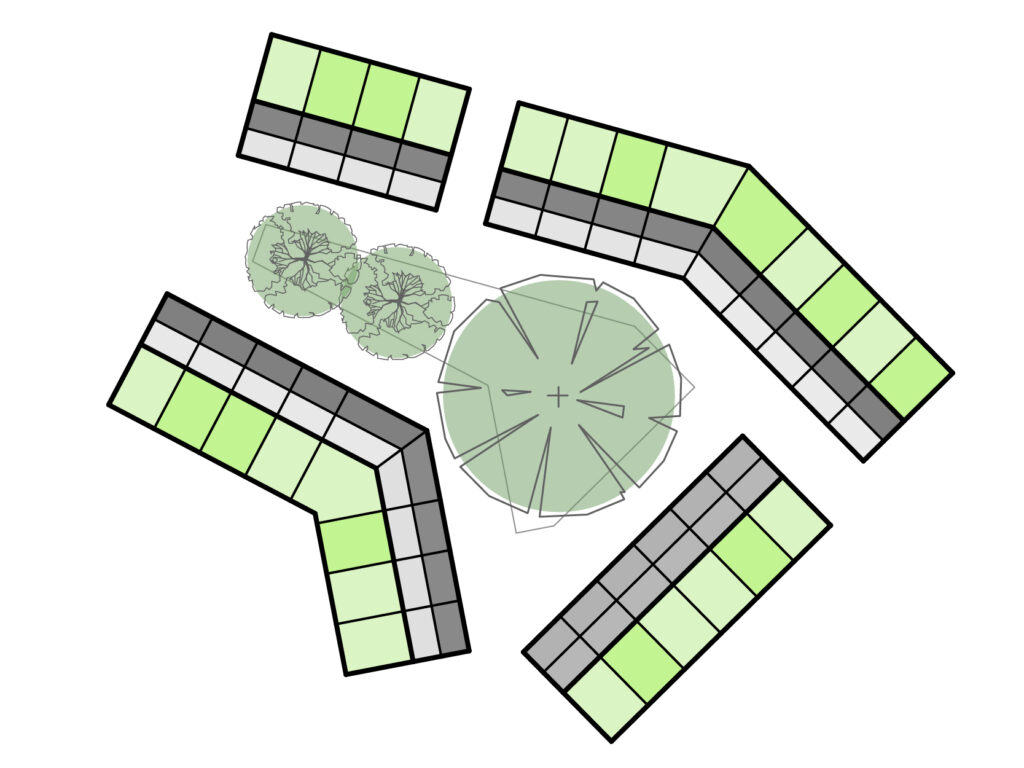
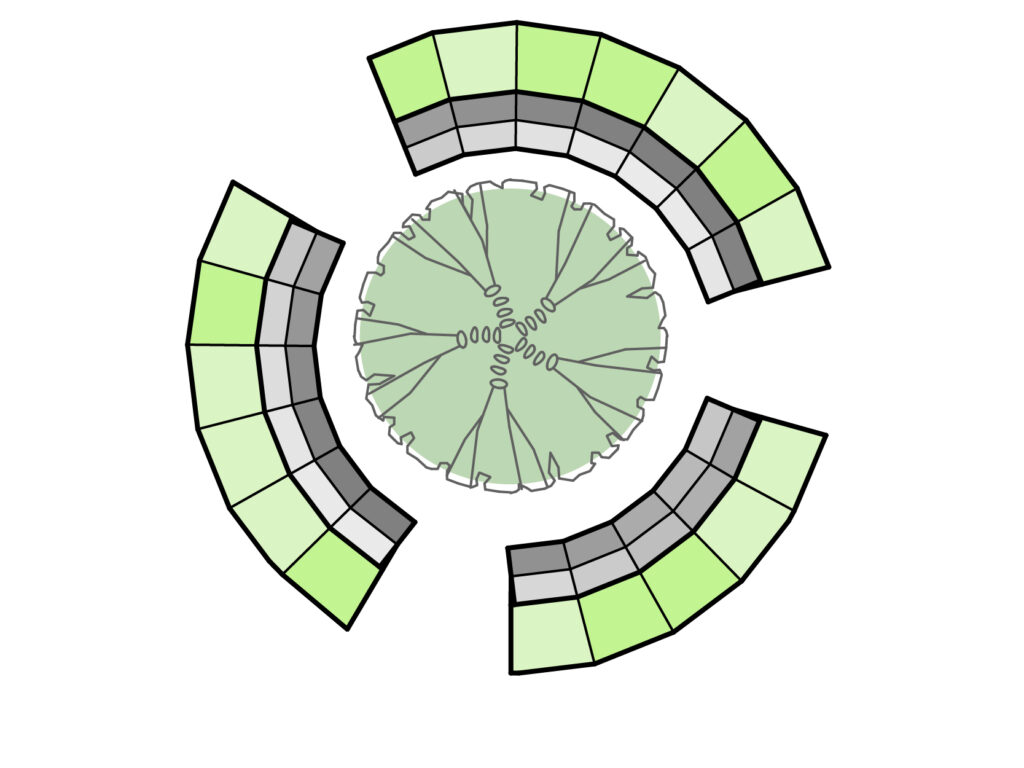
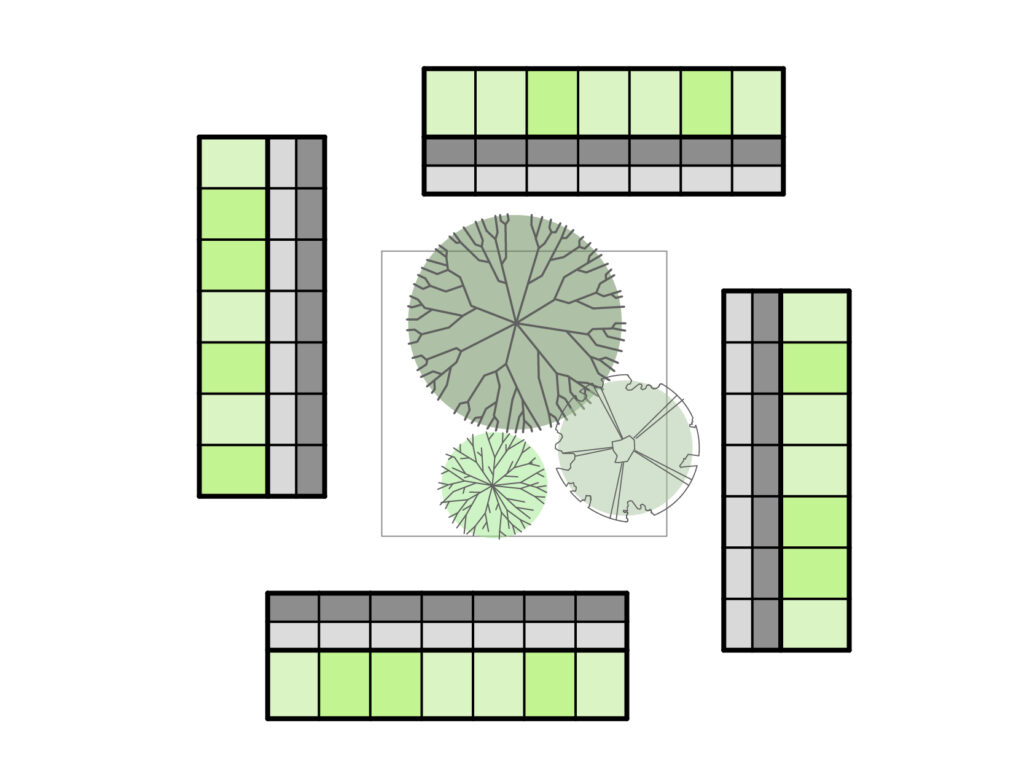
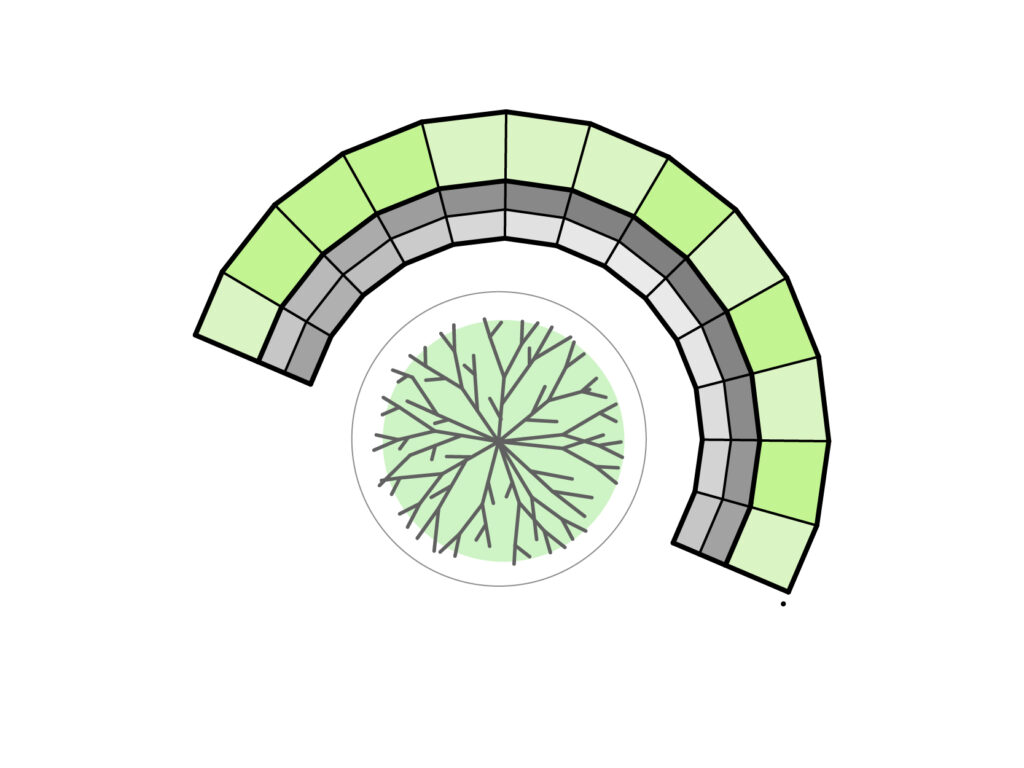
The protection of existing and creation of new green corridors, together with the provision of a network of green spaces and other green infrastructure will provide multiple benefits for biodiversity, nature, recreation, climate resilience and also support health and well-being. These corridors can include landscape buffers, linear parks, green streets, back streets or embankments, and for example the former Carrington ‘Rides’.
Applicants should demonstrate in their submission how this element of the Code has been complied with, including how this element fits in with a masterplan or design framework for the place as a whole.
Area types:
Documents required:
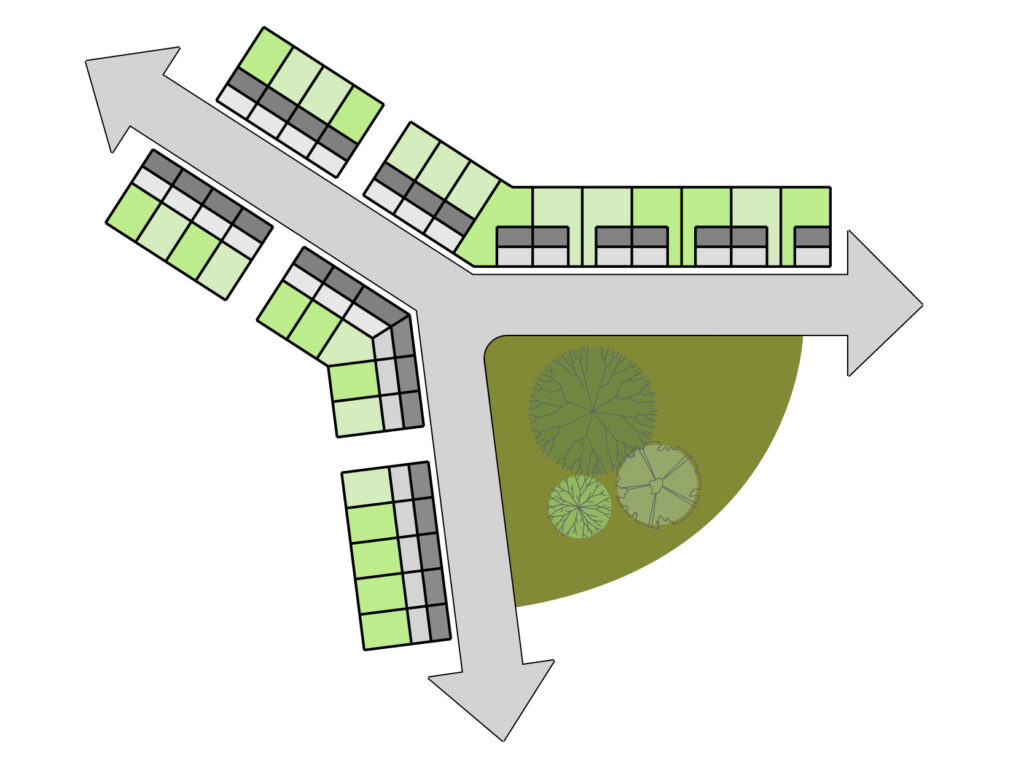
Green links to surrounding countryside
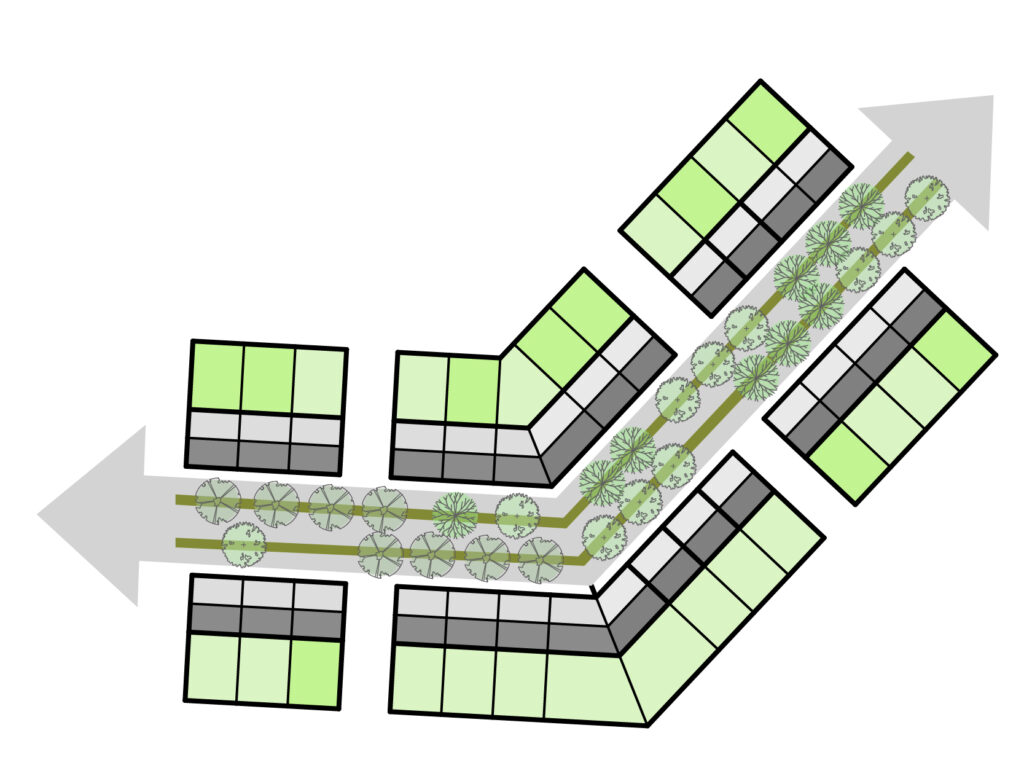
Green streets
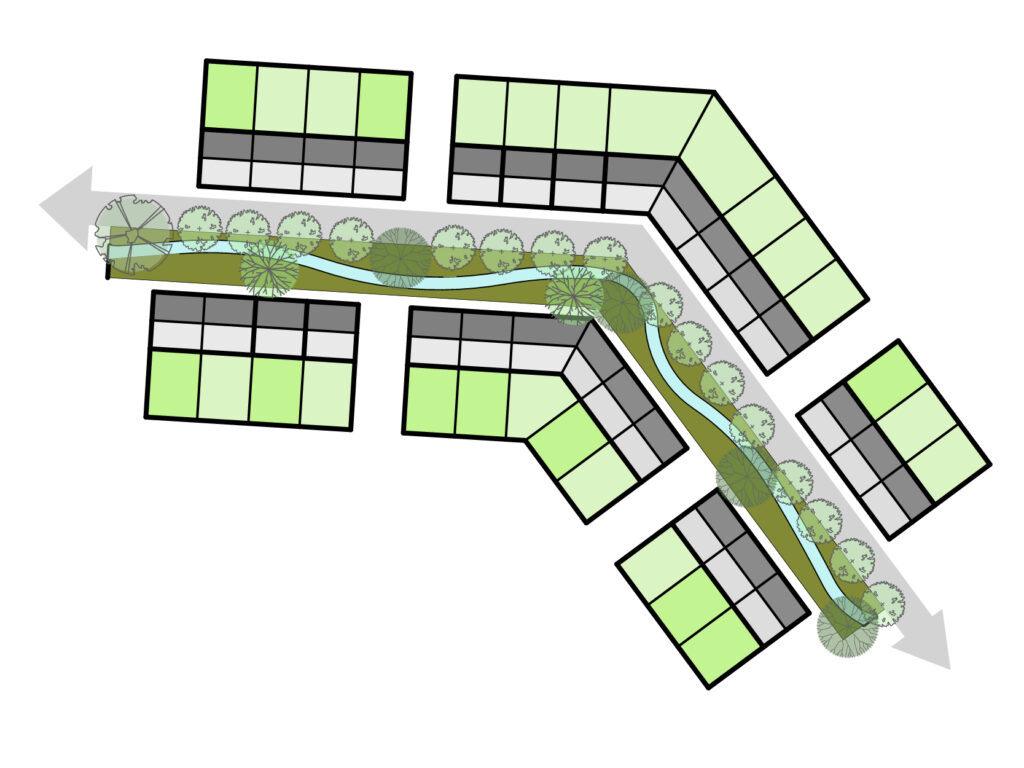
Green and blue streets incorporating SuDsSuDS are a natural approach to managing drainage in and around properties and other developments. Sustainable drainage measures are ones which avoid adding to flood risks both at a development site and elsewhere in the catchment by replicating natural drainage processes. SuDS work by slowing and holding back the water that runs off from a site, alleviating flooding and allowing natural processes to break down pollutants. More
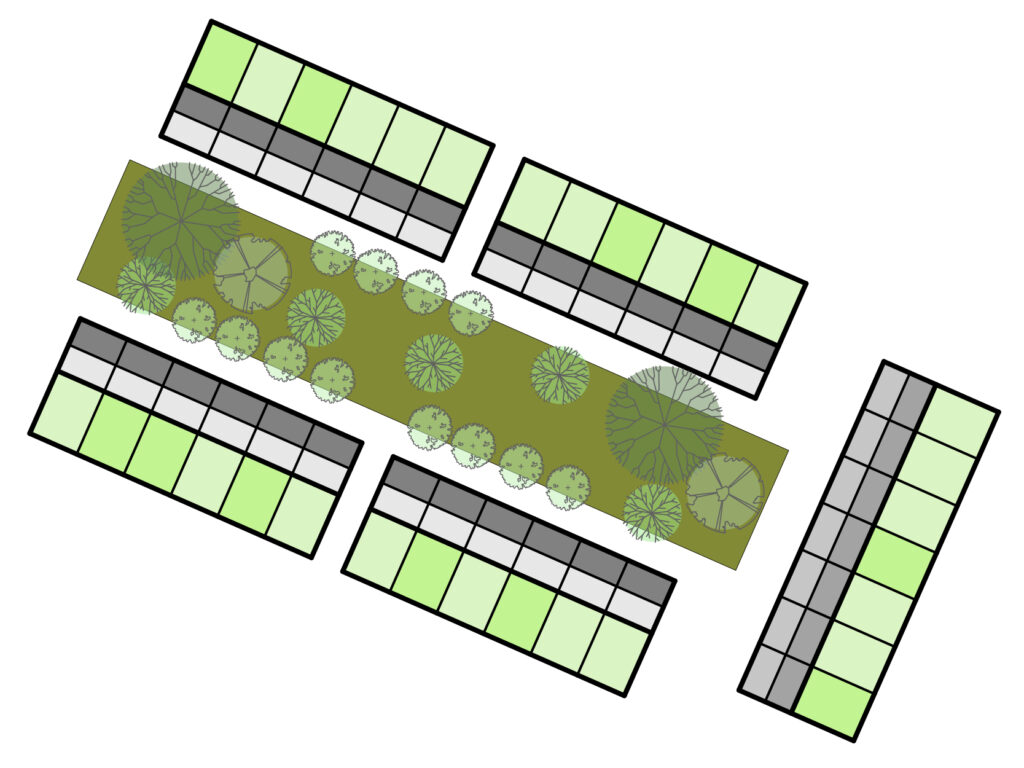
Linear spaces

Hulme Living Leaf Street Housing by Mecanoo for One Manchester The area around Leaf Street in Hulme, just outside Manchester city centre, has a history
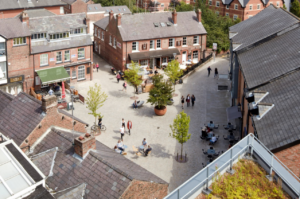
by Planit IE and Civic Engineers for Trafford Council The use of consistent and high quality materials harmonise the public realmThis is the space between
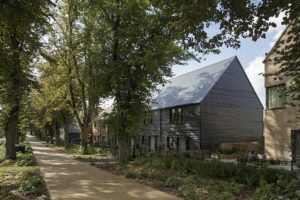
The Avenue by Pollard Thomas Edwards Architects for Hill This development inserts 76 new homes into a conservation area in a historic market town and
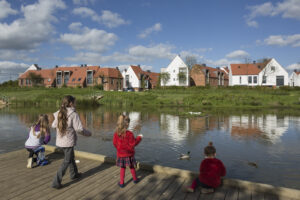
Derwenthorpe by Studio Partington for Joseph Rowntree Foundation Derwenthorpe was one of the first large-scale low carbon communities in northern England. Its ‘green’ heating and
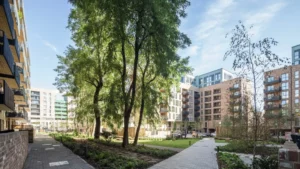
Acton Gardens by Alison Brooks Architects for Countryside Properties This £500m masterplan for the 2600 home, 40-acre regeneration of the South Acton Estate was won by
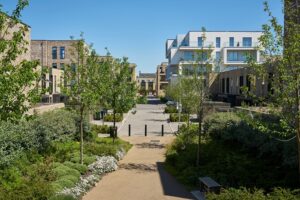
Aura, Great Kneighton by Tate Hindle for Countryside Properties Aura is an example of how good new housing communities can be if a local authority
Trafford Council, Trafford Town Hall, Talbot Road, Stretford, M32 0TH
